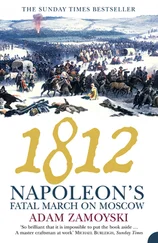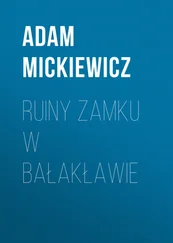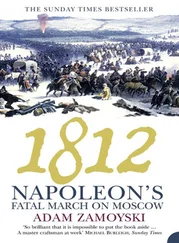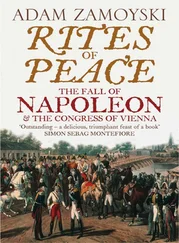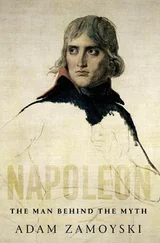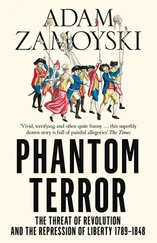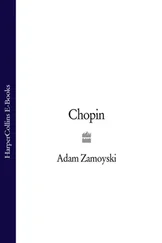WARSAW 1920
Lenin’s Failed Conquest of Europe
ADAM ZAMOYSKI

Harper Press
HarperCollins Publishers
1 London Bridge Street
London SE1 9GF
www.harpercollins.co.uk
Published by HarperCollinsPublishers 2008
Copyright © Adam Zamoyski 2008
The author asserts the moral right to be identified as the author of this work
A catalogue record for this book is available from the British Library
All rights reserved. No part of this publication may be reproduced, stored in a retrieval system, or transmitted, in any form or by any means, electronic, mechanical, photocopying, recording or otherwise, without the prior permission of the publishers.
HarperCollins Publishers has made every reasonable effort to ensure that any picture content and written content in this ebook has been included or removed in accordance with the contractual and technological constraints in operation at the time of publication.
Source ISBN: 9780007225521
Ebook Edition © DECEMBER 2014 ISBN: 9780007284009
Version: 2020-02-04
Cover
Title Page WARSAW 1920 Lenin’s Failed Conquest of Europe ADAM ZAMOYSKI
Copyright
List of Illustrations
List of Maps
Introduction
1 Old Scores and New Dawns
2 Playing Soldiers
3 Grand Designs
4 The Miracle on the Vistula
5 Settling the Scores
6 The Aftermath
Keep Reading
Sources
Further Reading in English
Index
Also by the Author
About the Publisher
Pilsudski reviewing volunteers setting off for the front. (Centralne Archiwum Wojskowe, Warsaw)
Kamenev with soldiers of the Red Army. (The David King Archive, London)
Russian infantry on parade. (The David King Archive, London)
Russian heavy artillery outside Warsaw, August 1920. (The David King Archive, London)
A colour party of Red cavalry, spring 1920. (The David King Archive, London)
The Red cavalry’s secret weapon, the tachanka. (The David King Archive, London)
Polish field artillery in Pinsk, spring 1920. (Centralne Archiwum Wojskowe, Warsaw)
The Polish 16th Lancers marching through Równe, March 1920. (Biblioteka Ksiazat Czartoryskich, Kraków)
Polish heavy artillery in Ukraine, May 1920. (Centralne Archiwum Wojskowe, Warsaw)
The Polish Air Force’s Kosciuszko Squadron, made up of American volunteers. (The Polish Institute and Sikorski Museum, London) Polish armoured train. (Centralne Archiwum Wojskowe, Warsaw)
A Russian divisional radio transmitter. (The David King Archive, London)
Zeligowski. (Centralne Archiwum Wojskowe, Warsaw)
Yakir. (The David King Archive, London)
Uborevich. (The David King Archive, London)
Sosnkowski. (The Józef Pilsudski Institute, London)
A Russian armoured car captured by the Poles in the Kiev offensive.
(Centralne Archiwum Wojskowe, Warsaw)
Smigly-Rydz taking the salute as Polish troops march into Kiev, 7 May 1920. (The Józef Pilsudski Institute, London)
Smigly-Rydz greeting the Ukrainian leader Ataman Symon Petlura in Kiev. (Centralne Archiwum Wojskowe, Warsaw)
Recruits of the Ukrainian National Army parade before Petlura.
(Centralne Archiwum Wojskowe, Warsaw)
Lenin calling for volunteers to fight Poland, May 1920. (The David King Archive, London)
Tukhachevsky. (The David King Archive, London)
Szeptycki. (The Józef Pilsudski Institute, London)
Stalin. (The David King Archive, London)
Yegorov. (The David King Archive, London)
Budionny and Voroshilov. (The David King Archive, London)
Gai. (The David King Archive, London)
Units of the Polish First Army in retreat, early August 1920. (The Józef Pilsudski Institute, London)
The PolRevKom, Lenin’s government for Poland. (Centralne Archiwum Wojskowe, Warsaw)
Soldiers of Budionny’s Konarmia, July 1920. (The David King Archive, London)
Officers of the French military mission to Poland. (Centralne Archiwum Wojskowe, Warsaw)
Haller. (The Józef Pilsudski Institute, London)
Iwaszkiewicz. (Centralne Archiwum Wojskowe, Warsaw)
A detachment of the Women’s Volunteer Legion, August 1920.
(Centralne Archiwum Wojskowe, Warsaw)
Sikorski. (Centralne Archiwum Wojskowe, Warsaw)
Polish machine-gun emplacement outside Warsaw, August 1920.
(Centralne Archiwum Wojskowe, Warsaw)
Polish tanks at Minsk Mazowiecki, August 1920. (Centralne Archiwum Wojskowe, Warsaw)
Polish infantry advancing outside Warsaw. (Centralne Archiwum Wojskowe, Warsaw)
Pilsudski. (Centralne Archiwum Wojskowe, Warsaw)
Men of Gai’s KonKorpus being disarmed by German lancers.
(Centralne Archiwum Wojskowe, Warsaw)
Europe after the Paris peace settlement Europe after the Paris peace settlement
The Kiev offensive and the battle of the Berezina
The Kiev débâcle
Tukhachevsky’s march on Europe
The battle for Brody
The Polish regrouping operation
The battle for Warsaw, 14 August
The battle for Warsaw, 15–16 August
The counterstroke, 16–22 August
Budionny’s last battle
Last stand on the Niemen
It may come as something of a surprise to most people that a battle as decisive as Marathon or Waterloo took place in Europe between the end of the First World War in 1918 and the outbreak of the Second in 1939. Dramatic and fateful as they were, the events that took place at the gates of Warsaw in August 1920 have sunk into oblivion.
This is the more surprising as they had a profound effect on the politics of the 1920s and 1930s, on the course of the Second World War, and on the peace settlement of 1945, as well as a lasting one on attitudes throughout Europe — figures such as Stalin, Churchill and De Gaulle were personally involved, while others such as Mussolini, Franco and Hitler took careful note.
The reasons for this eclipse are not hard to find. One is that while the battle did indeed alter the course of history, it did so by preventing something from taking place rather than by reversing it; this meant that it had no palpable impact on anyone not directly involved. Another is that historians of the time were mostly preoccupied with other themes, such as composing triumphalist accounts of the Great War from their own national standpoint. If they mentioned the battle of Warsaw at all, they tended to follow the lead of Soviet historians, who, not wishing to accept that their country had lost a war, treated it as part of the Russian Civil War, which the Soviets had won. Finally, the Second World War reversed the effect of the 1920 contest, seemingly rendering it irrelevant in the greater scheme of things. A negative view of Eastern Europe and the wholesale acceptance of socialist orthodoxies by Western historians in the decades following it did the rest.
This little book does not pretend to fill the resulting void. All it can aspire to is to provide an outline of the events, and specialists will find my generalisations wanting. Since the political and diplomatic background has been extensively covered by others (see Further Reading, page 149), I have concentrated on the military operations, and in particular on providing a synthesis accessible to the general reader and a succinct overview of what happened and how. This necessarily excludes dozens of minor actions and ignores the part played by many lesser actors, some of them of crucial importance. Nor can it give anything but a hint of the horrors and the heroism involved, or of the sense, which comes through all personal accounts and contemporary documents, that this was a crisis of European civilization.
Читать дальше





